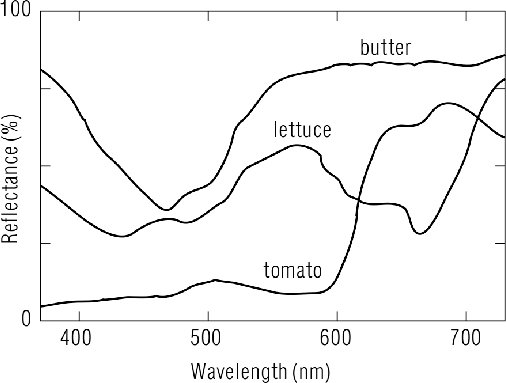
Next: Spectral power Up: 4.1 Basic Behavior of Previous: Coherent versus jumbled light Contents Index
To make sense out of the jumble of waves, we will describe how they are distributed in terms of wavelengths. Figure 4.5 shows the range of wavelengths that are visible to humans. Each wavelength corresponds to a spectral color, which is what we would perceive with a coherent light source fixed at that wavelength alone. Wavelengths between 700 and 1000nm are called infrared, which are not visible to us, but some cameras can sense them (see Section 9.3). Wavelengths between 100 and 400nm are called ultraviolet; they are not part of our visible spectrum, but some birds, insects, and fish can perceive ultraviolet wavelengths over 300nm. Thus, our notion of visible light is already tied to human perception.
 |
Steven M LaValle 2020-11-11